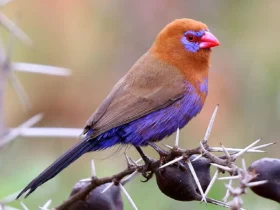In the meadows and woodlands of Europe, a graceful and melodious bird takes flight—the European Turtle Dove (Streptopelia turtur). Known for its gentle nature and distinctive purring call, this migratory bird has captured the hearts of birdwatchers and nature enthusiasts with its delicate beauty and remarkable migration journeys. Join us as we embark on a journey to explore the captivating world of the European Turtle Dove, unraveling its appearance, behavior, and cultural significance.
European Turtle Dove images
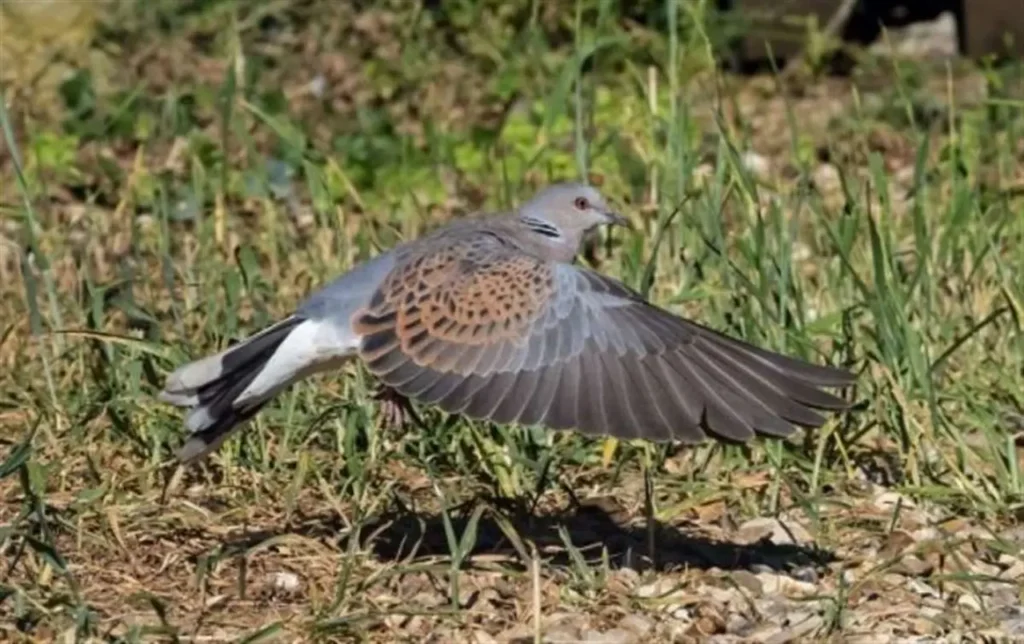
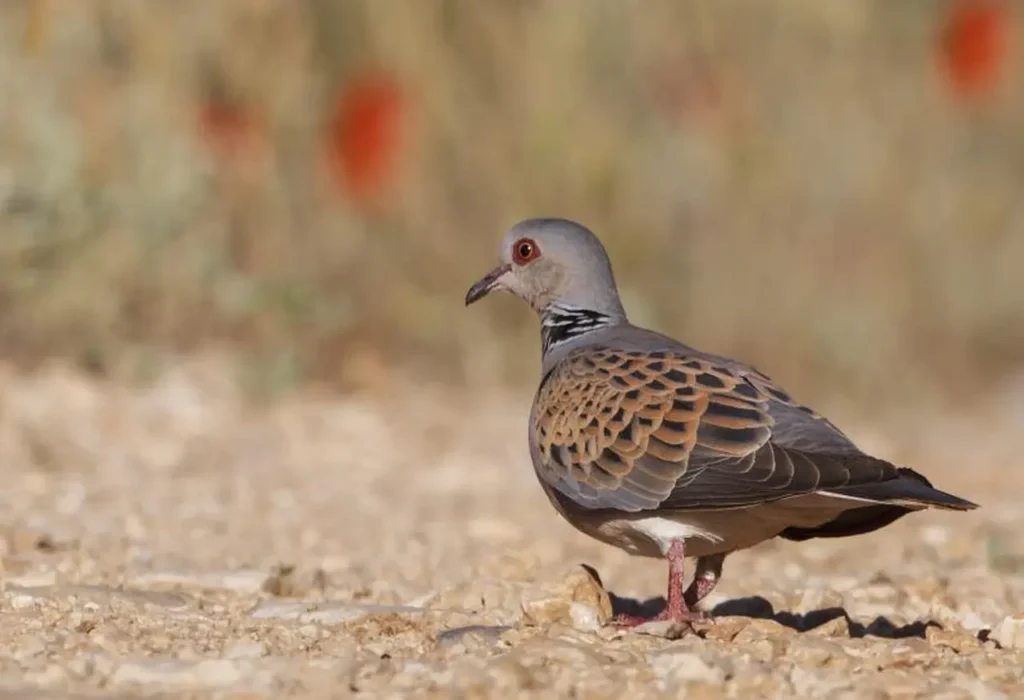
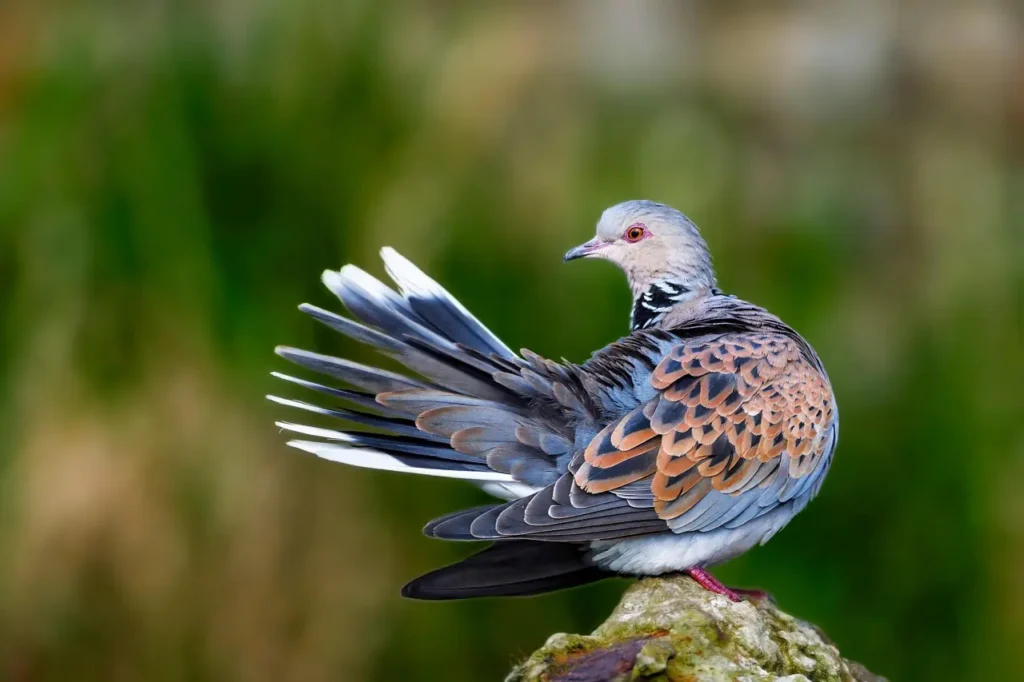
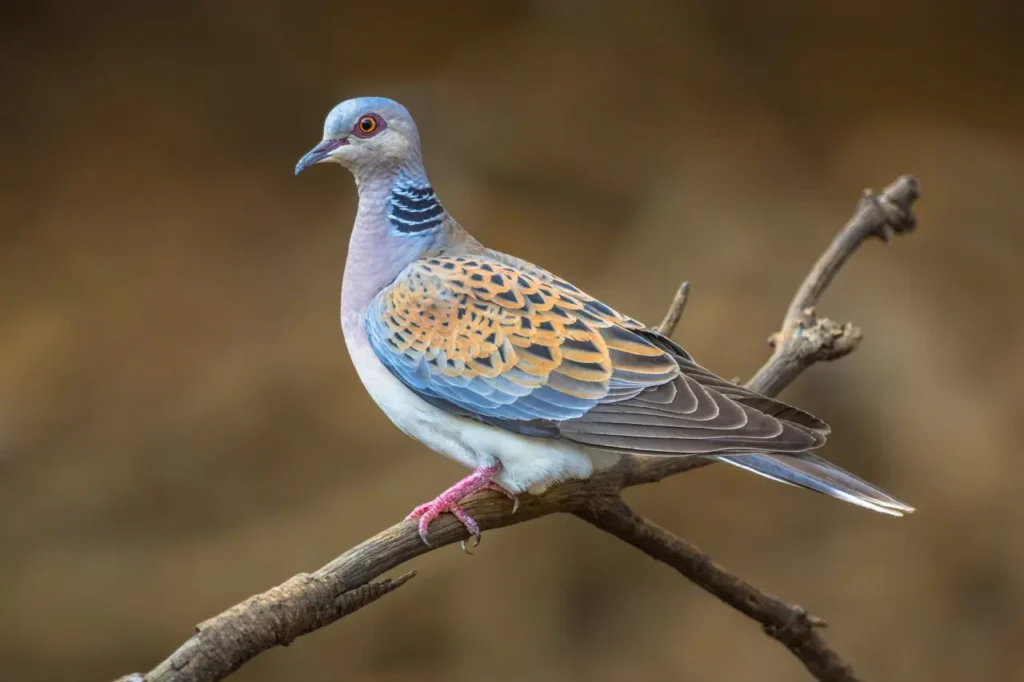
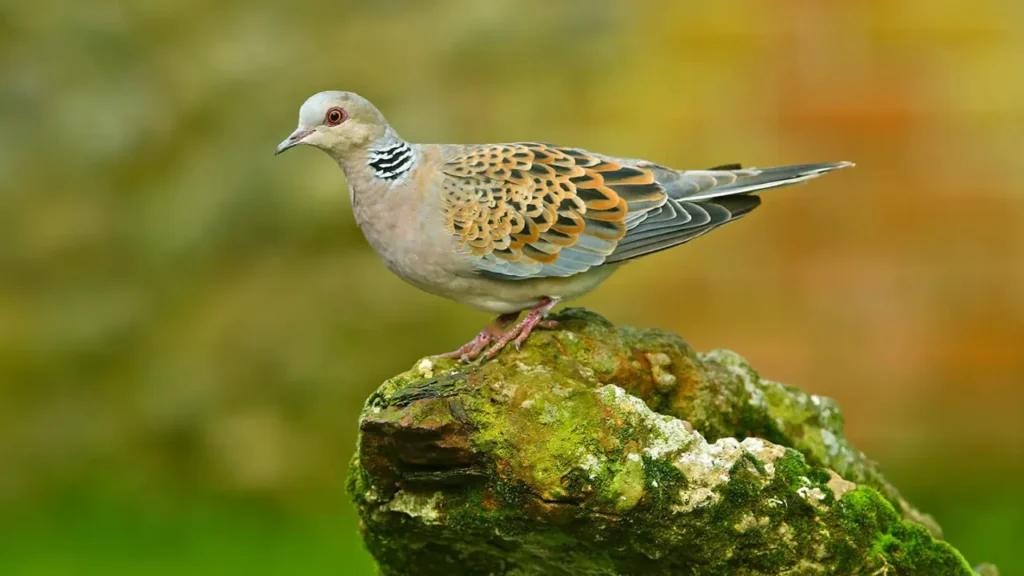
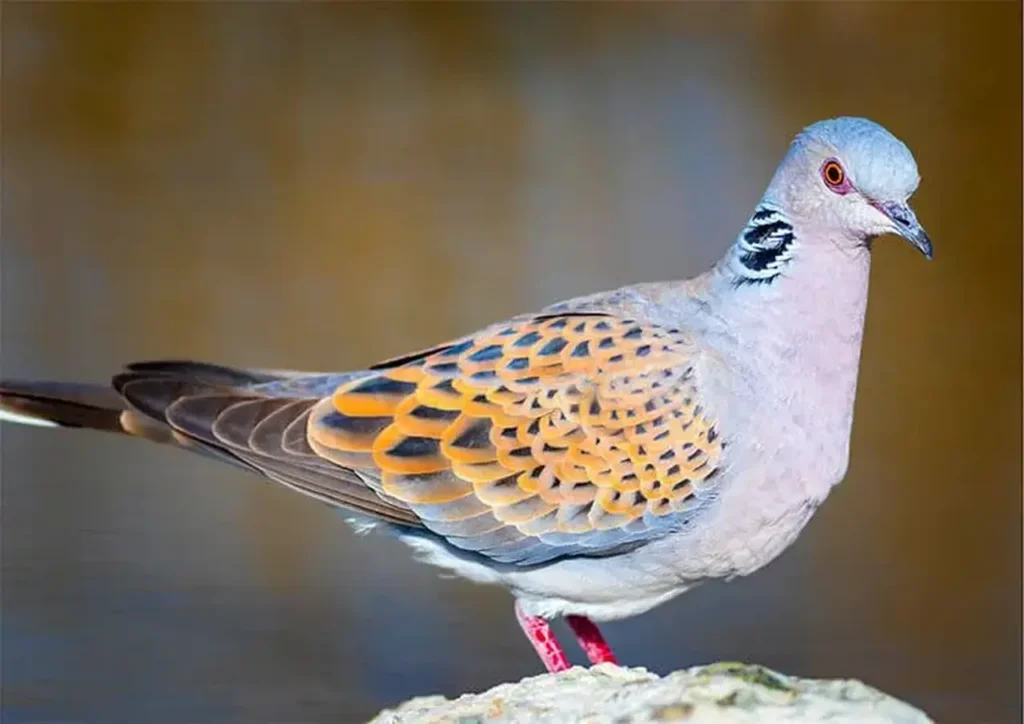
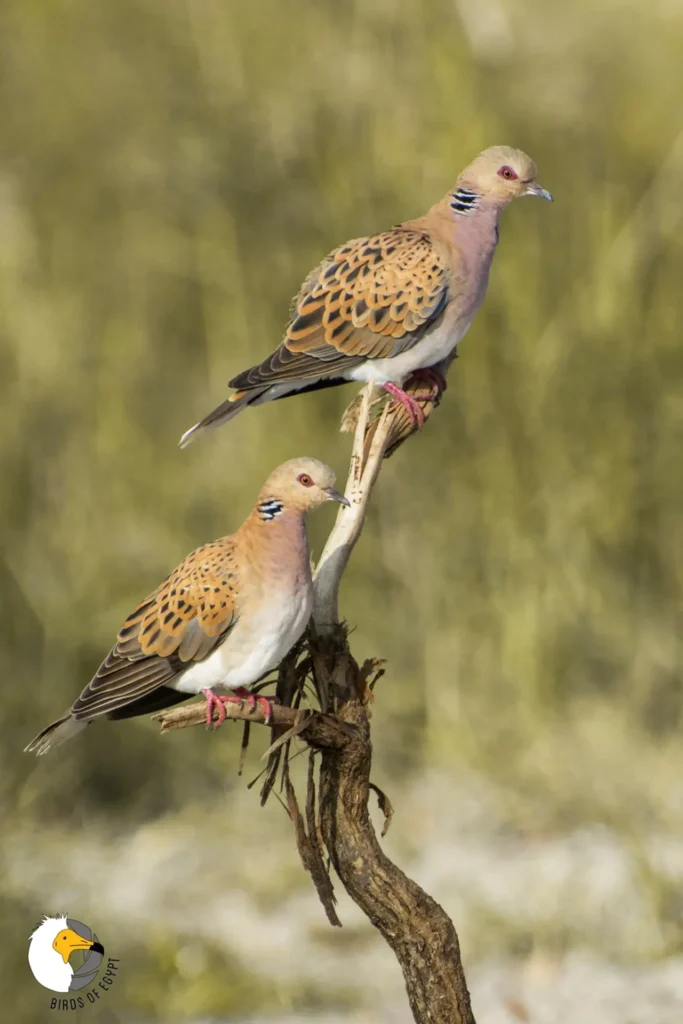
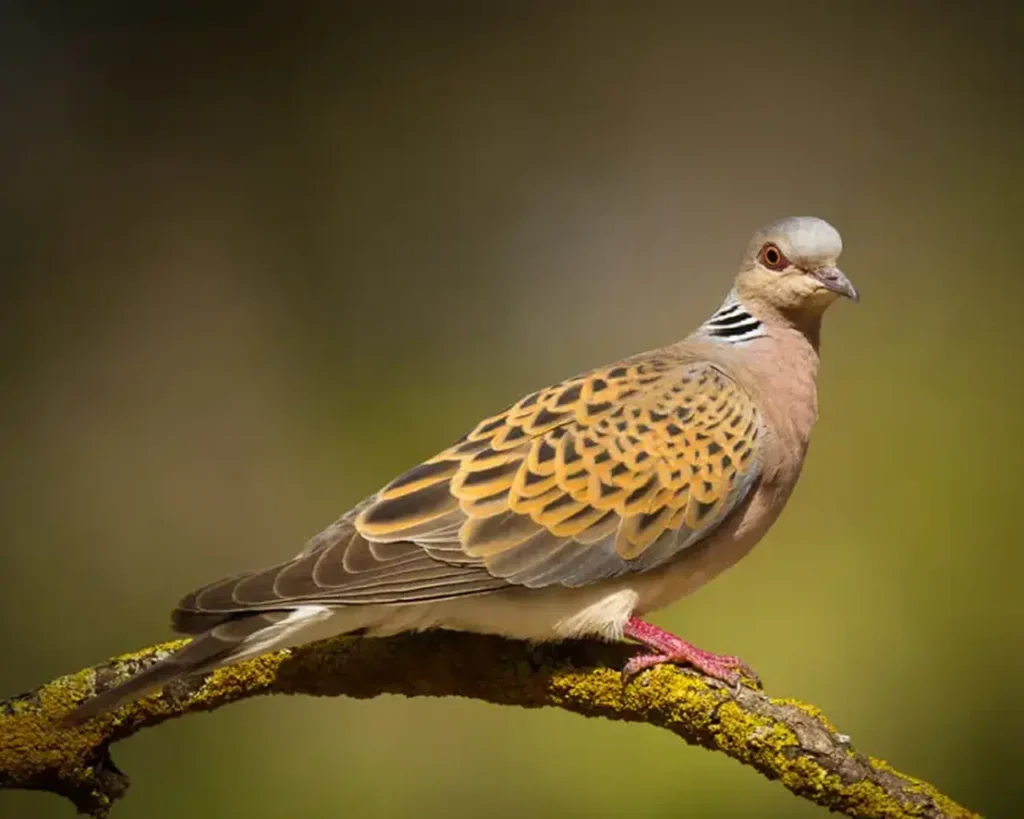
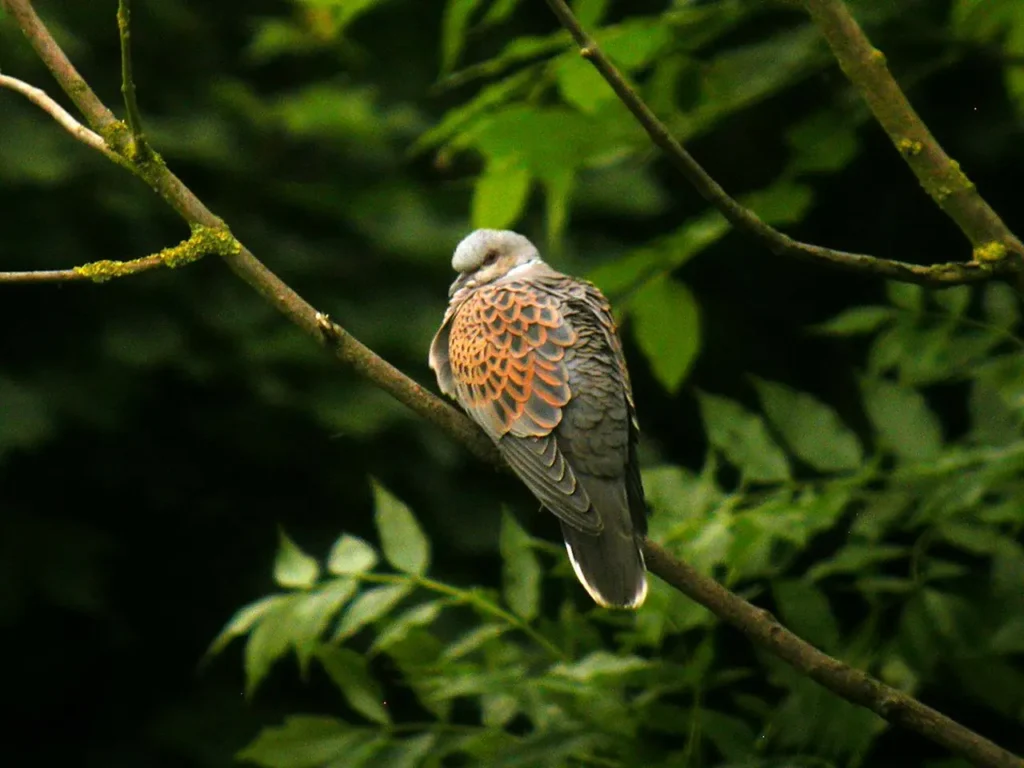
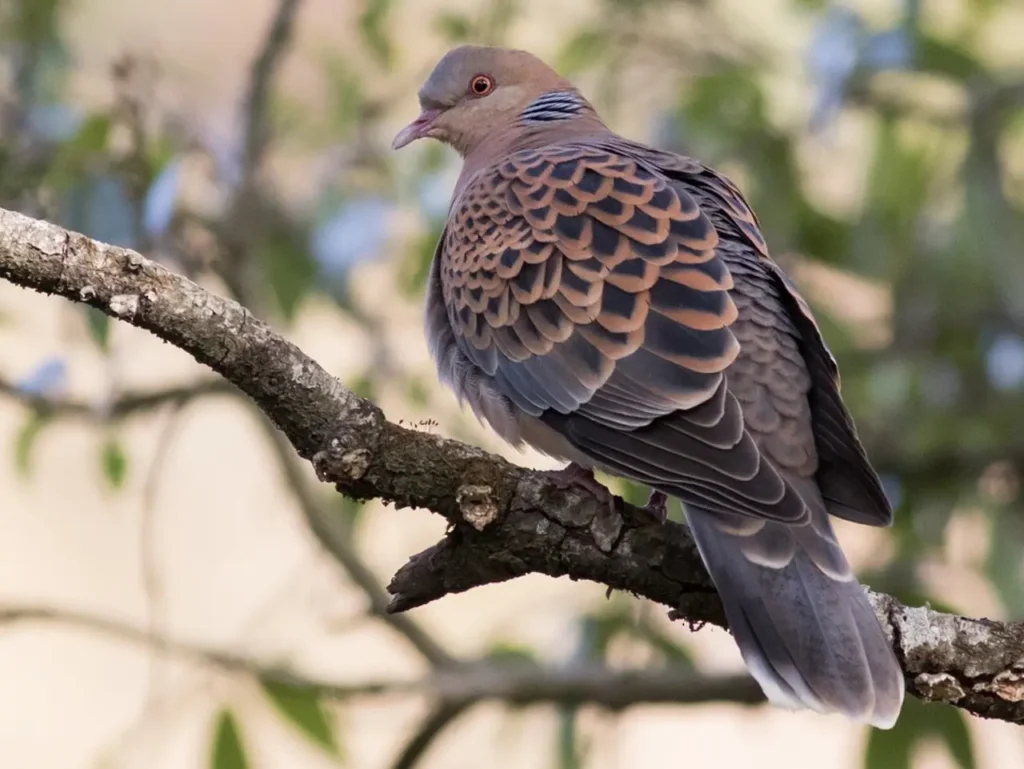


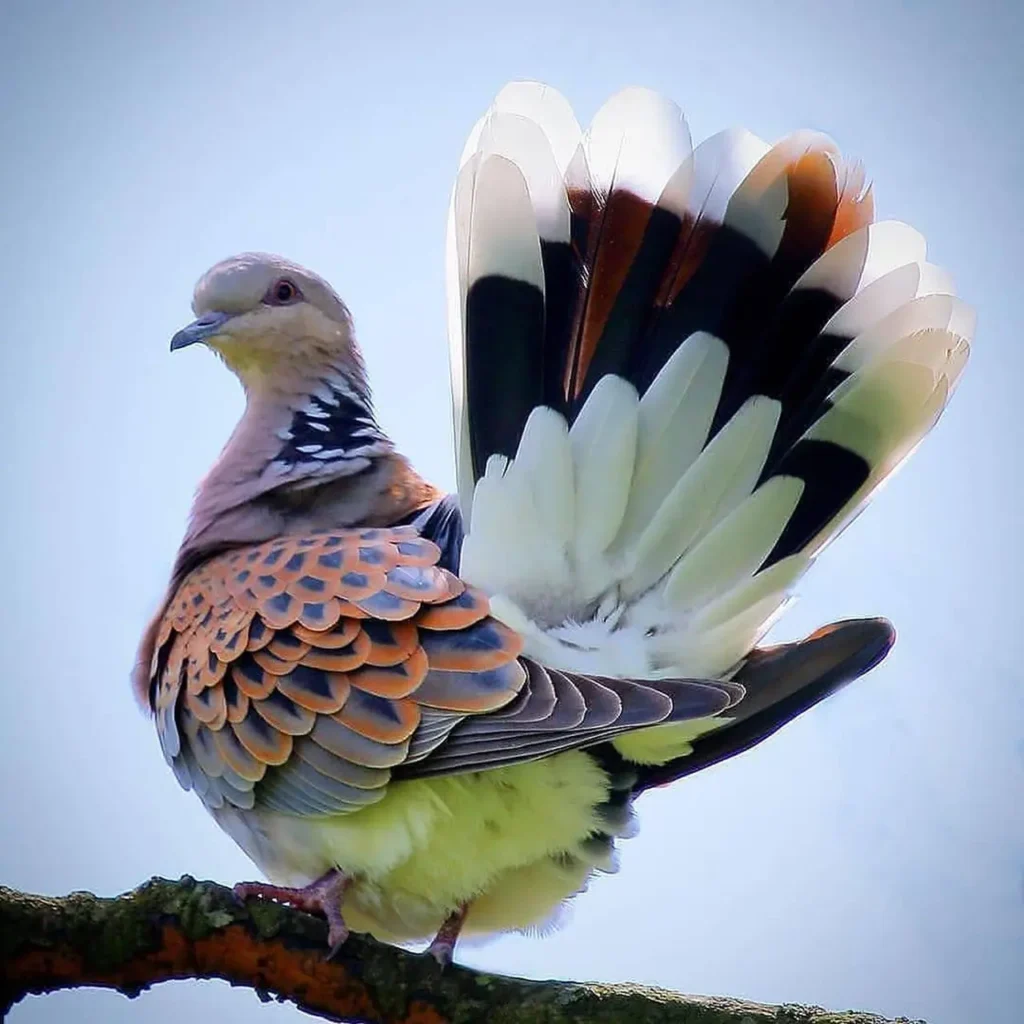
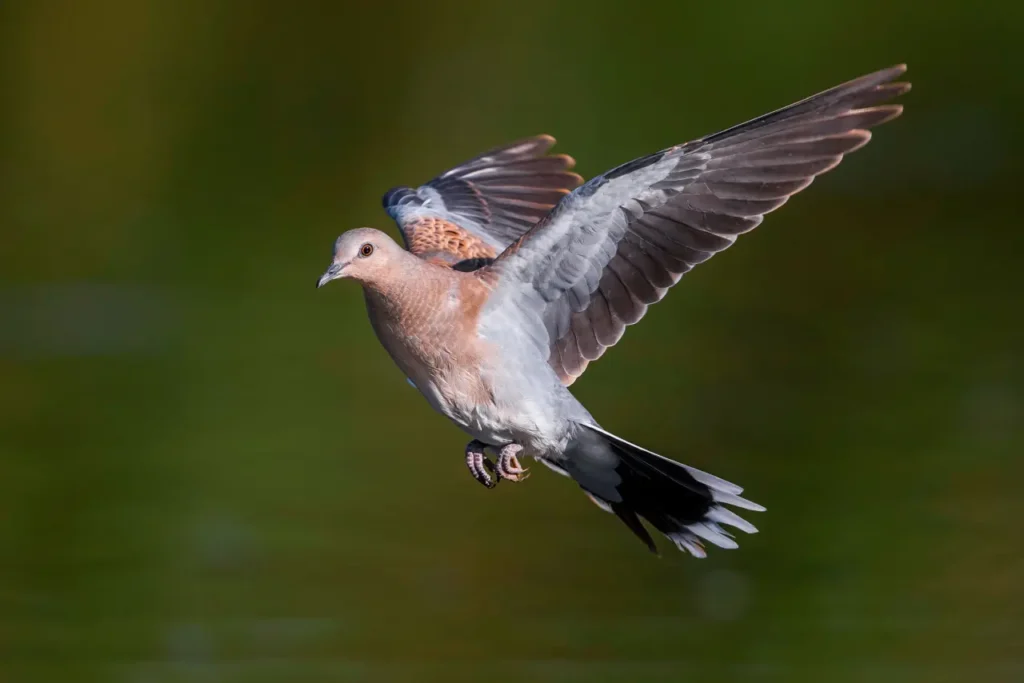
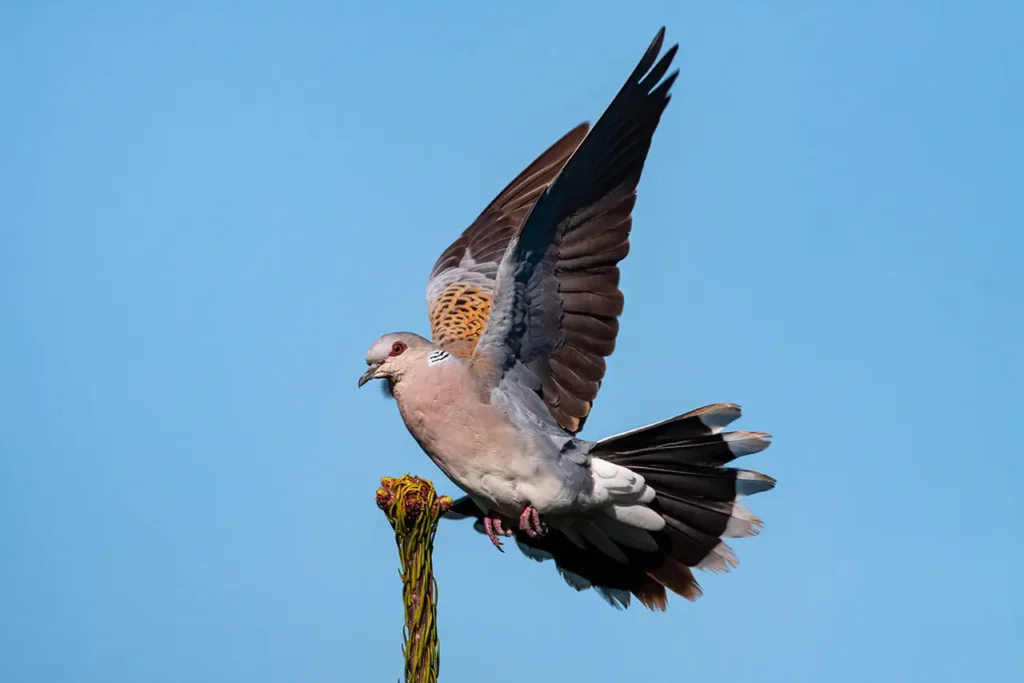

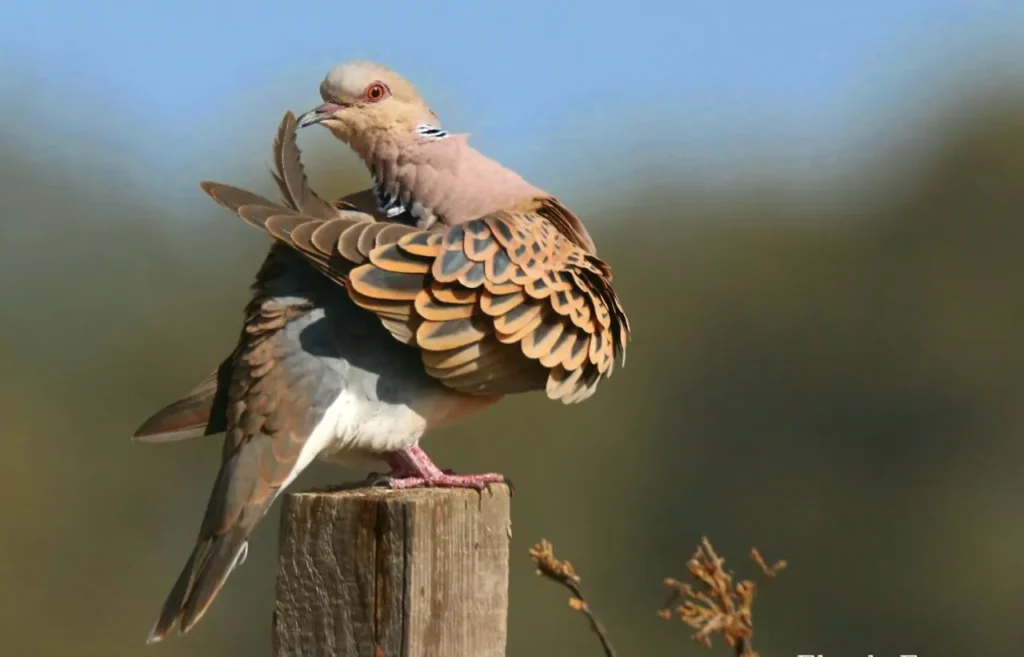

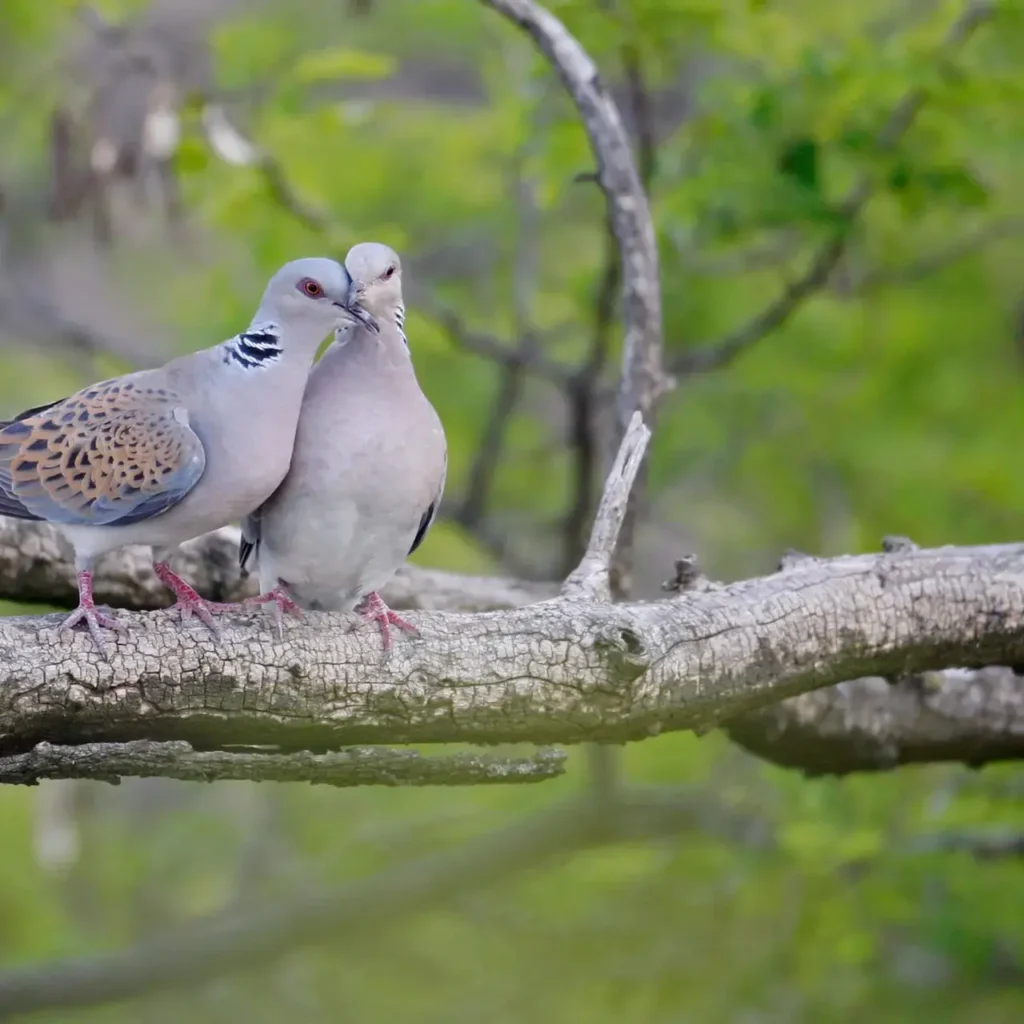
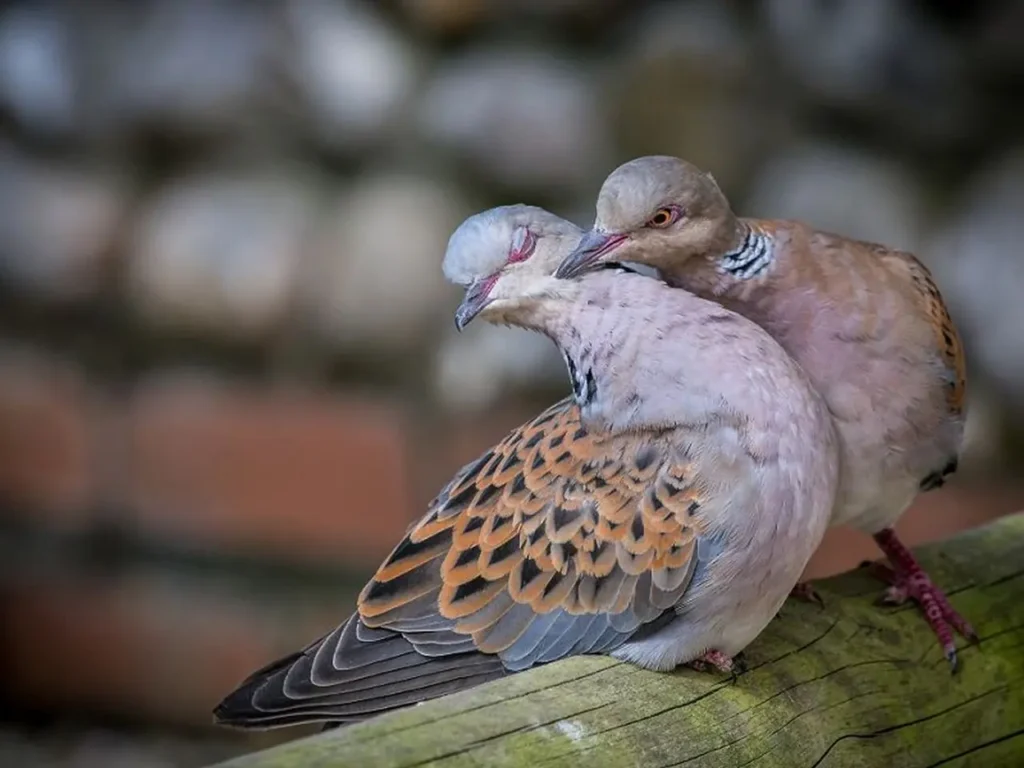
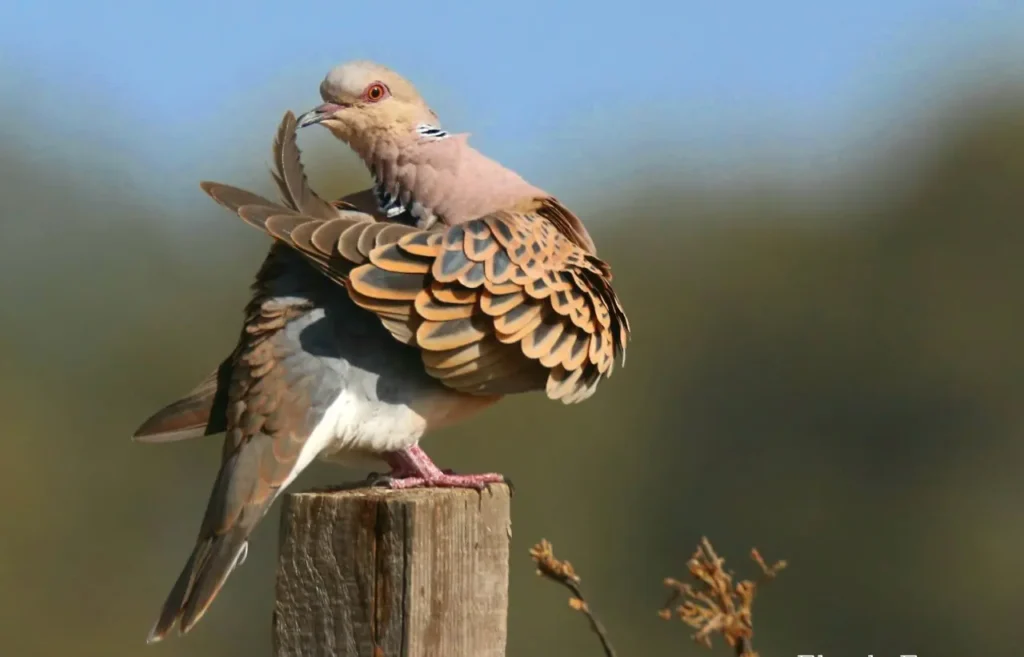
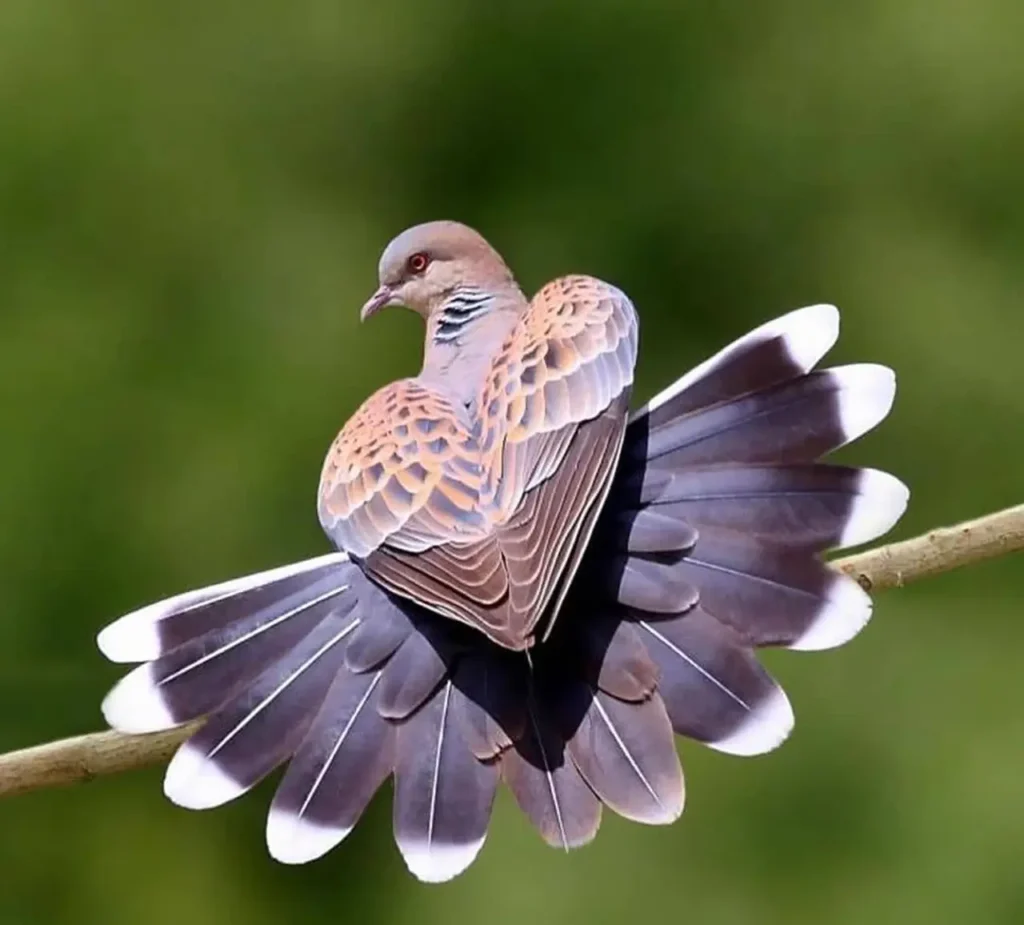
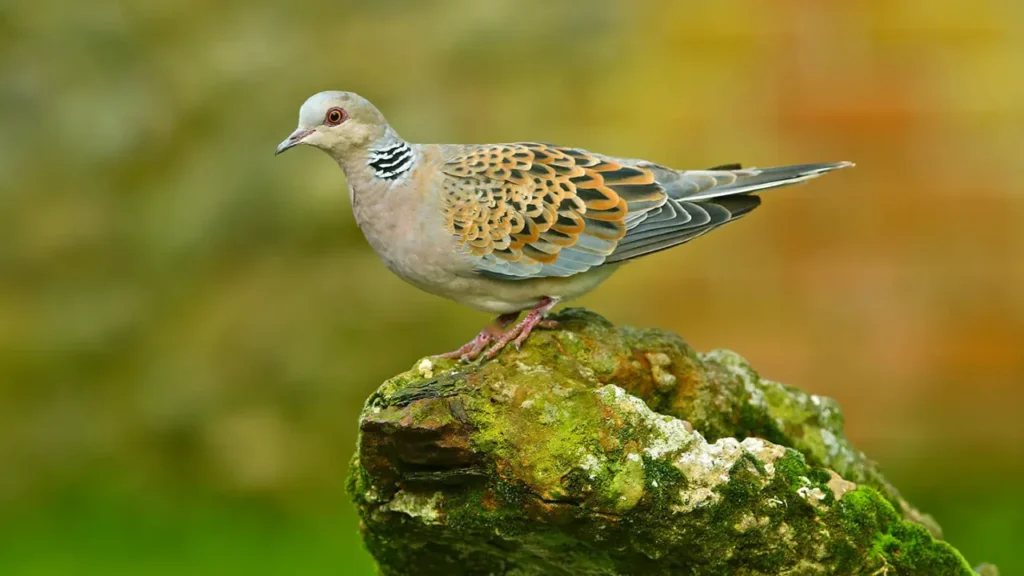
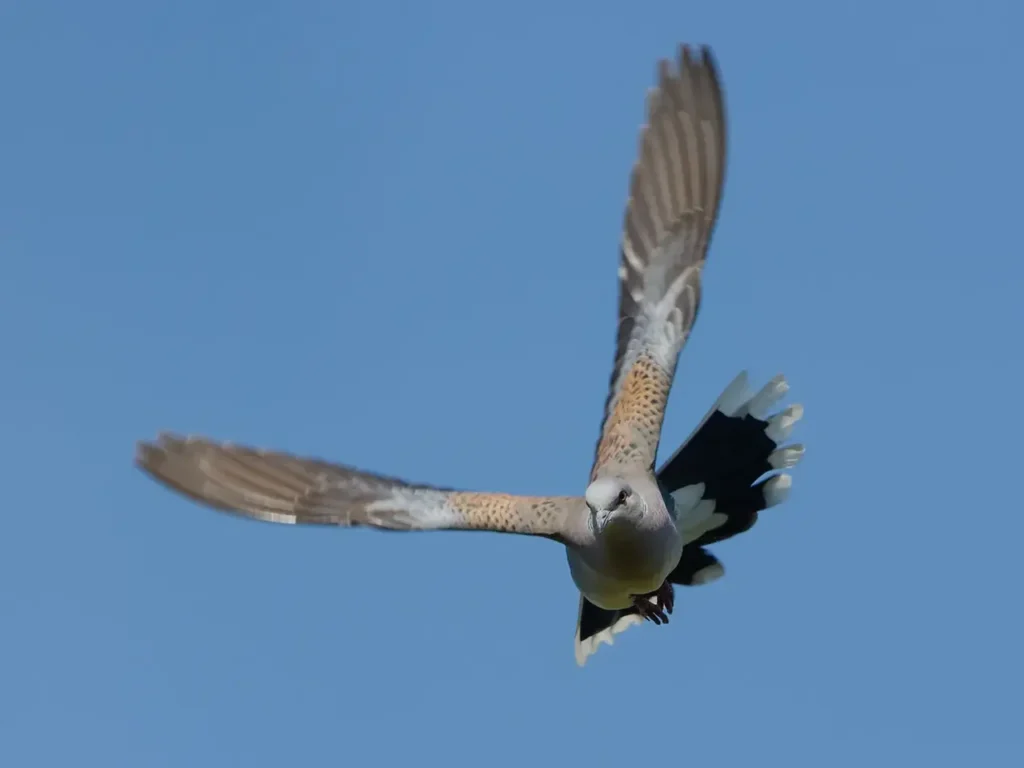
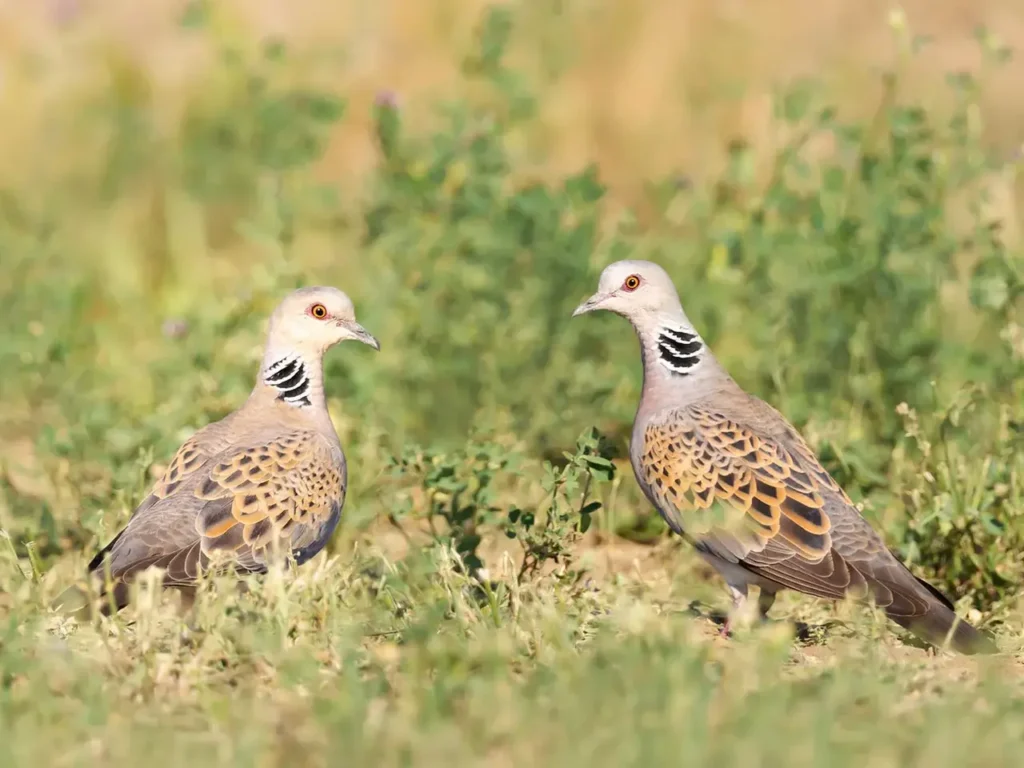
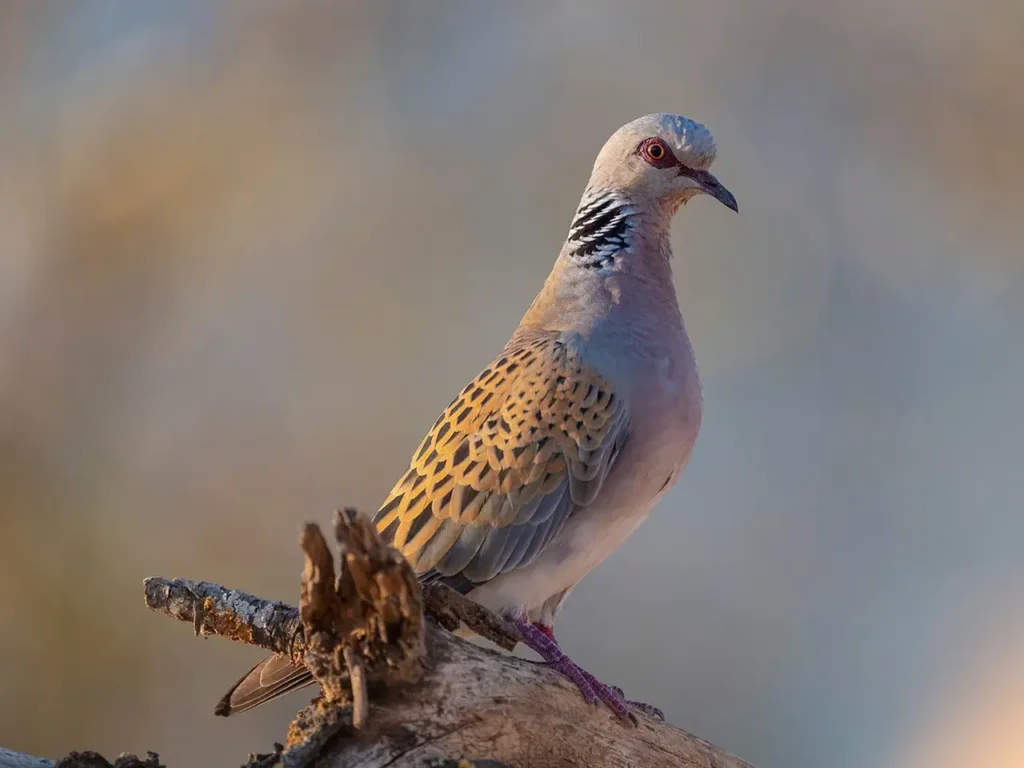

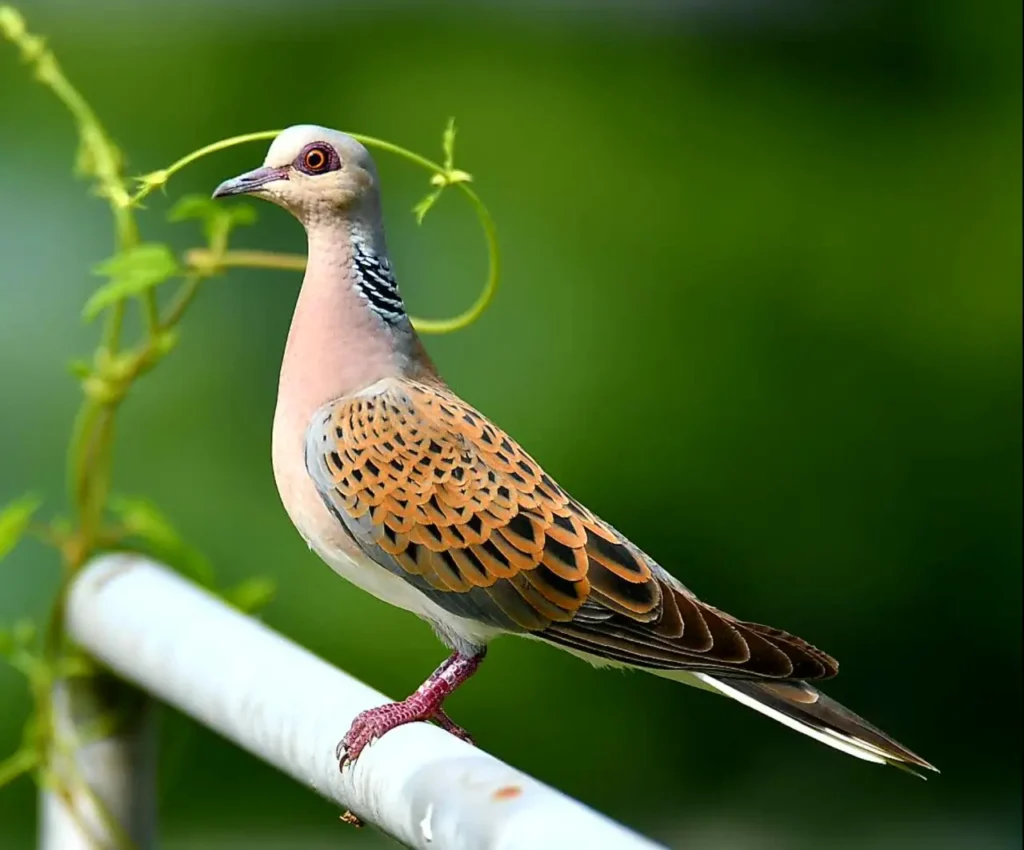
Appearance and Distribution
The European Turtle Dove is a medium-sized bird with a slender body and a long, tapered tail. Its plumage is a mix of soft, muted colors, including various shades of brown, gray, and pale pink. The dove’s most distinctive feature is the small black-and-white stripe pattern on its neck, which sets it apart from other dove species.
This migratory bird breeds across Europe, from the British Isles to Russia, and as far south as the Mediterranean region. During the winter, it undertakes an epic journey, crossing vast distances to reach its wintering grounds in sub-Saharan Africa.
Behavior and Mating
European Turtle Doves are known for their gentle and peaceful nature. They spend much of their time foraging for seeds, grains, and small fruits on the ground or in low vegetation. The male often performs aerial displays, flying in a looping pattern while uttering its soft, purring call to attract a mate. Once a pair has formed, they engage in a synchronized courtship display, involving bowing, cooing, and mutual preening.
Migration and Conservation
The European Turtle Dove is renowned for its remarkable migratory journeys. Every year, these birds undertake long-distance flights between their breeding grounds in Europe and their wintering grounds in Africa. This migration can span thousands of kilometers and requires precise navigation and physical endurance. Unfortunately, the population of European Turtle Doves has declined significantly over the years due to various factors, including habitat loss, agricultural intensification, and hunting pressure during migration. Conservation efforts focused on preserving their breeding habitats, establishing protected areas, and promoting sustainable land-use practices are crucial to safeguard their populations.
Cultural Significance and Symbolism
The European Turtle Dove holds cultural significance in various societies. It has long been associated with love, peace, and devotion, featuring prominently in poems, songs, and folklore. In many cultures, the cooing sound of the dove is considered a symbol of tranquility and a harbinger of good fortune. The dove’s image has been used as a universal symbol of peace and has been embraced by different peace movements around the world.
Conservation Efforts and Citizen Science
Citizen science initiatives play a vital role in monitoring and conserving European Turtle Dove populations. Birdwatchers and nature enthusiasts contribute valuable data by participating in surveys, recording sightings, and providing information on the bird’s breeding and wintering locations. These efforts help researchers and conservation organizations better understand the dove’s ecology, migration patterns, and population dynamics, enabling targeted conservation strategies.
The European Turtle Dove, with its gentle nature, migratory prowess, and cultural symbolism, captures our imagination and reminds us of the beauty and interconnectedness of the natural world. As we admire its muted plumage and listen to its soft purring call, let us be inspired to protect and conserve these remarkable birds and their habitats. By embracing sustainable practices, supporting conservation efforts, and appreciating the dove as a symbol of peace, we can ensure that future generations continue to witness the beauty and grace of the European Turtle Dove in the landscapes it graces.
